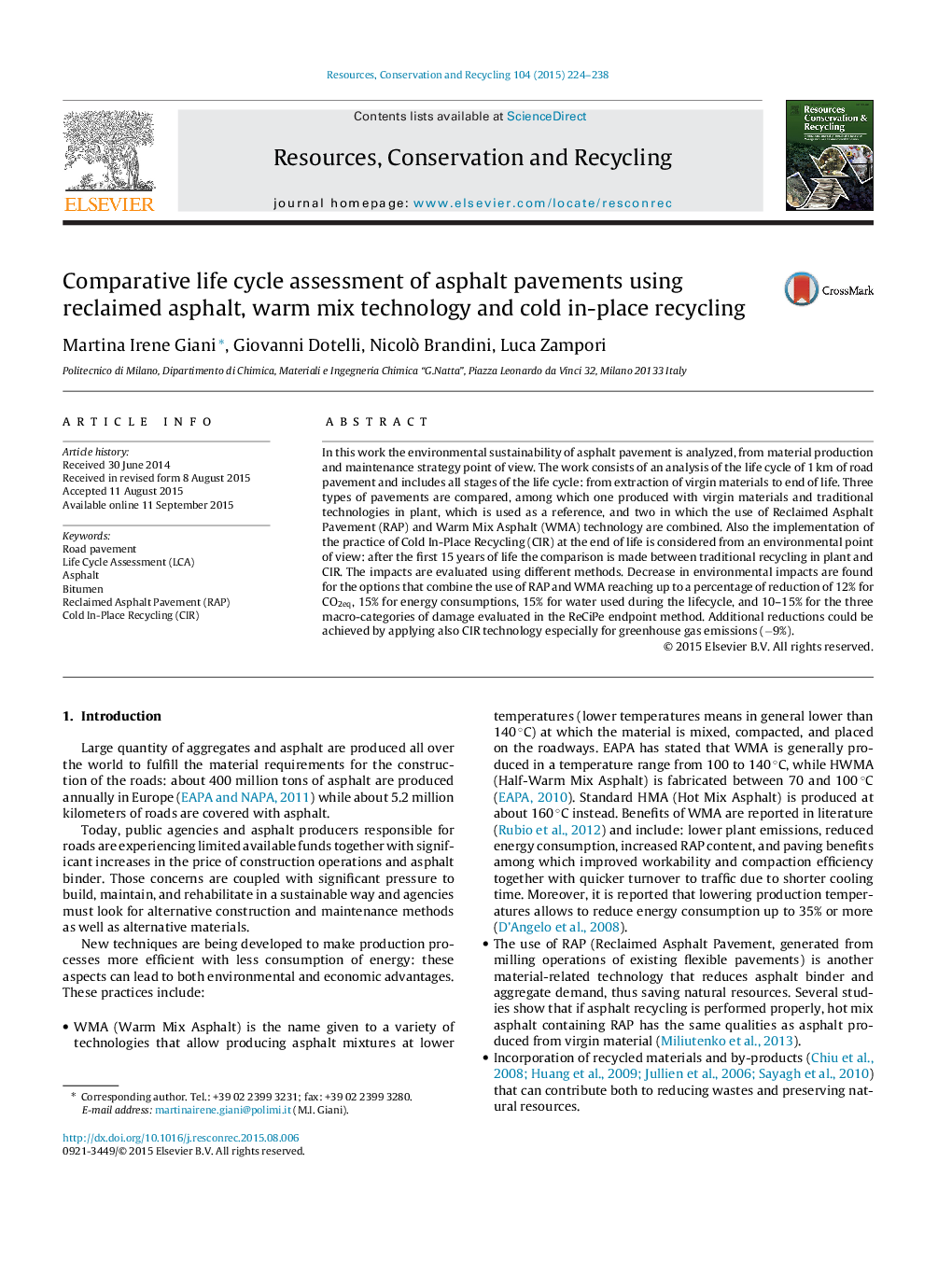| کد مقاله | کد نشریه | سال انتشار | مقاله انگلیسی | نسخه تمام متن |
|---|---|---|---|---|
| 1062825 | 948179 | 2015 | 15 صفحه PDF | دانلود رایگان |
• LCA of three pavements considering the combined use of RAP, WMA and CIR technology.
• Extraction and production of virgin materials present the higher impacts.
• RAP combined with WMA reduce all the environmental impacts of about 10–15%.
• CIR reduces aggregate use, transport, and plant consumption but requires more bitumen.
In this work the environmental sustainability of asphalt pavement is analyzed, from material production and maintenance strategy point of view. The work consists of an analysis of the life cycle of 1 km of road pavement and includes all stages of the life cycle: from extraction of virgin materials to end of life. Three types of pavements are compared, among which one produced with virgin materials and traditional technologies in plant, which is used as a reference, and two in which the use of Reclaimed Asphalt Pavement (RAP) and Warm Mix Asphalt (WMA) technology are combined. Also the implementation of the practice of Cold In-Place Recycling (CIR) at the end of life is considered from an environmental point of view: after the first 15 years of life the comparison is made between traditional recycling in plant and CIR. The impacts are evaluated using different methods. Decrease in environmental impacts are found for the options that combine the use of RAP and WMA reaching up to a percentage of reduction of 12% for CO2eq, 15% for energy consumptions, 15% for water used during the lifecycle, and 10–15% for the three macro-categories of damage evaluated in the ReCiPe endpoint method. Additional reductions could be achieved by applying also CIR technology especially for greenhouse gas emissions (−9%).
Journal: Resources, Conservation and Recycling - Volume 104, Part A, November 2015, Pages 224–238
